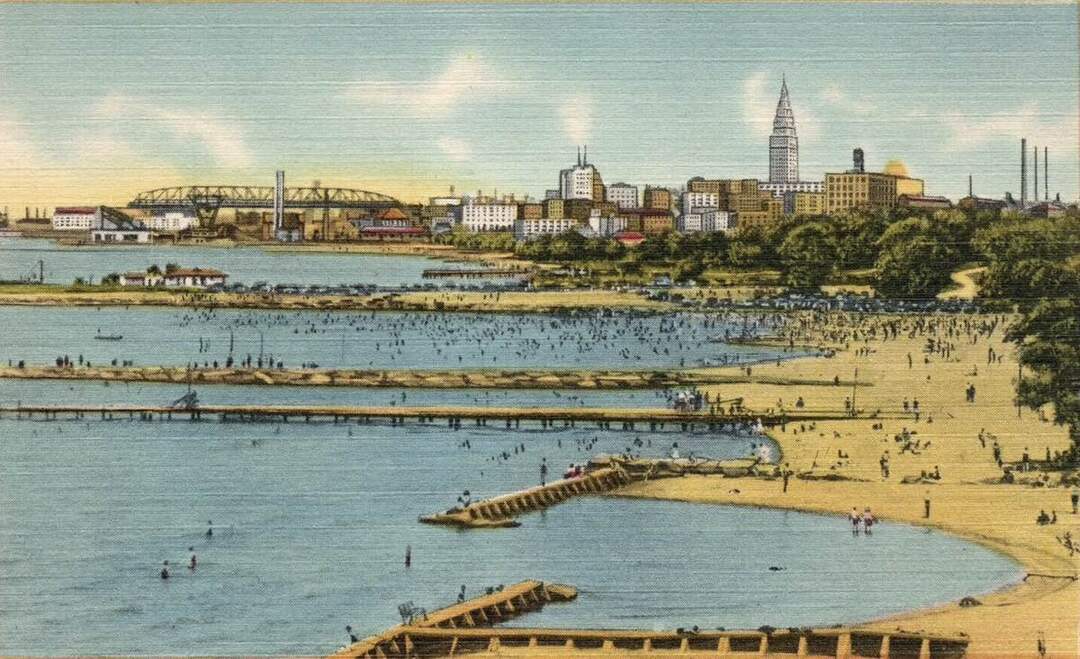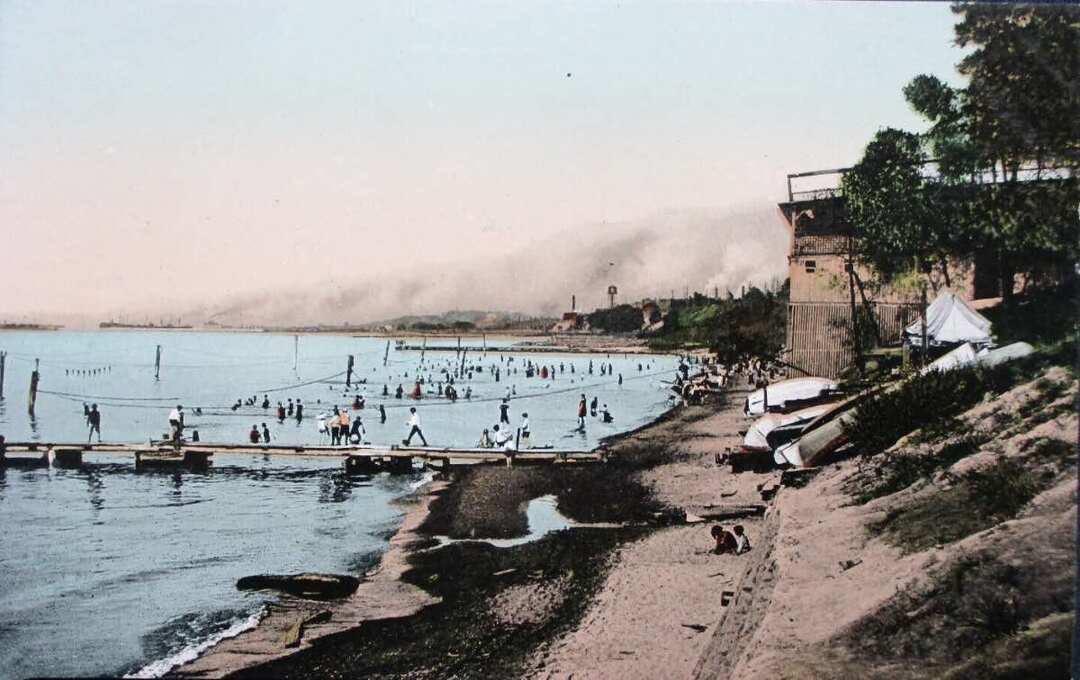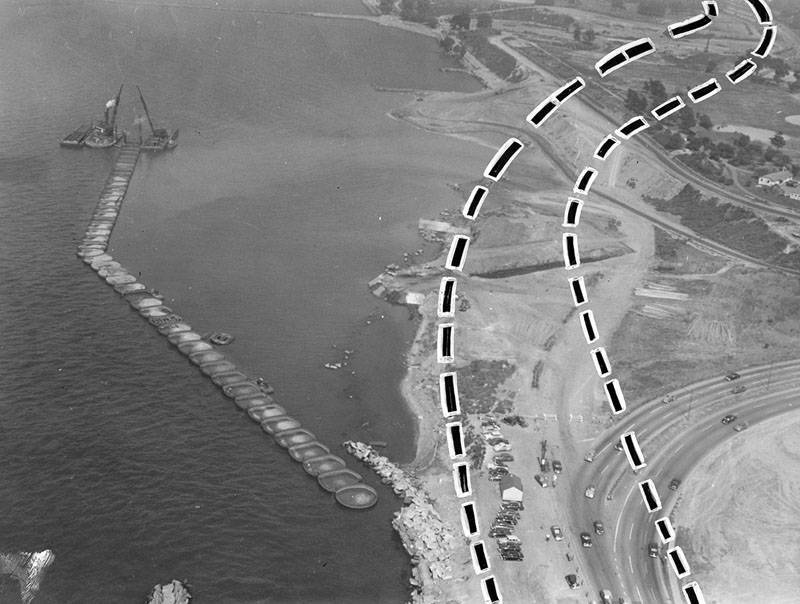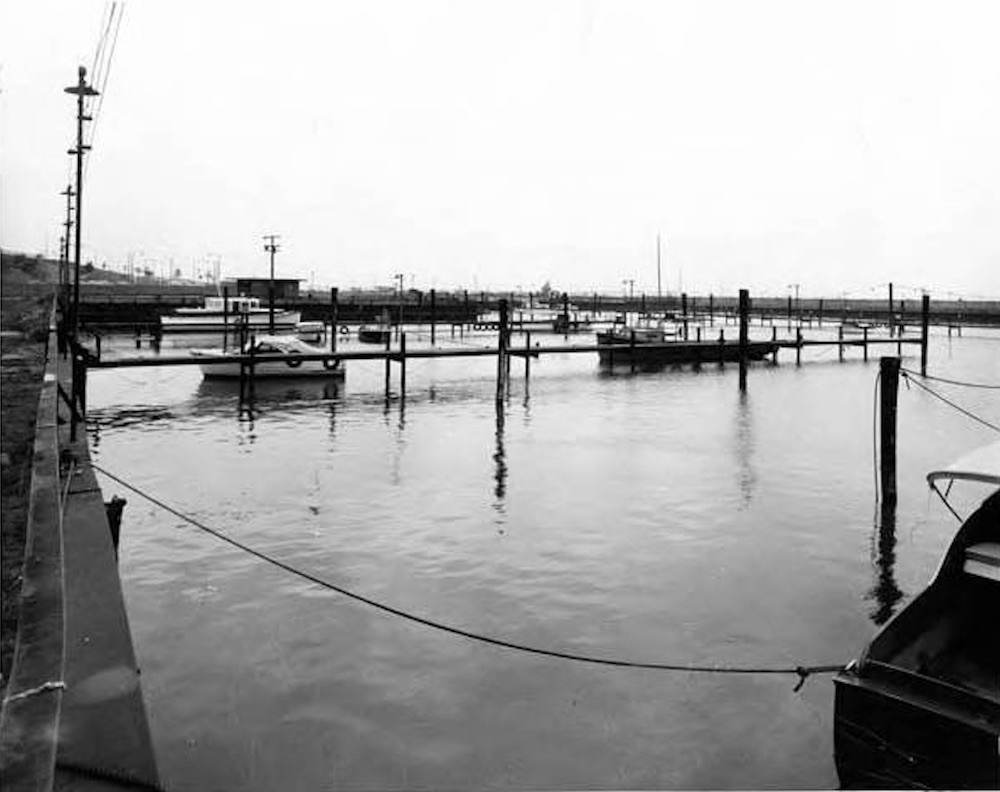Cleveland Lakefront Reservation
The Long Struggle to Maintain the City's Lakefront Parks

Since 2013 Cleveland’s lakefront parks have been run by the Cleveland Metroparks. Before the Metroparks assumed administration of the parks, the state of Ohio operated them as units of the Cleveland Lakefront State Park, and before that the city of Cleveland’s Board of Park Commissioners controlled these parks. It was a long road of pollution and vandalism that led to Metroparks control over the lakefront parks. Each previous administration started out with a good budget and short-term plans for the lakefront parks, but long-term maintenance issues ultimately undermined each administration’s stewardship of the parks.
The urban park movement came rather late to Cleveland, emerging in September 1865 when a city council committee was appointed to consider the establishment of public parks. Finally, after new state laws were enacted, in 1871 Cleveland’s Board of Park Commissioners was created. In 1874 the park board began selling park bonds to finance land acquisition and improvements to create several parks, including Lake View Park. This park stood on the natural bluff overlooking the Lake Erie until Municipal Stadium (later replaced by today’s FirstEnergy Stadium)—built on fill that extended the lakeshore northward—blocked the view. Cleveland’s parks started to take shape over the next ten years through various donations, but they lacked in comparison to park development in other cities with populations similar to Cleveland’s, and with growing urbanization it seemed that the city was running out of land to set aside for parks. Various state legislation led to an increase in park power, and by 1900 Cleveland would gain ten new parks totaling over 1,200 acres, approximately two thirds of which had been donated. Finally a good amount of Cleveland’s lakefront had been saved for parks and conservation in Edgewater Park, Gordon Park, and Lake View Park.
With so much newly acquired land, the park system started to struggle with the biggest problem that would plague the lakefront. Even the bonds the park commissioners sold could only be used to purchase new lands, not maintain them. Through the first twenty years of the 1900s, multiple public works projects were completed to appease the residents who claimed the city only opened parks away from the urban center. Cleveland’s combined storm water sewage system was also being completed at this time and the water treatment plants sat basically at the edge of Edgewater Park and Gordon Park. On most days the water treatment plant could do its job but with heavy rain, Cleveland’s sewers combined storm water and sewage, dumping the sludge into Lake Erie.
As in other cities, Cleveland’s parks would serve as a major focus for WPA workers during the Great Depression, but as people left for World War II, vandalism struck the lakefront parks. Continually the parks’ budget got smaller and smaller, not to mention that the Memorial Shoreway sliced through most of the lakefront parks by the 1950s. A series of Cuyahoga River fires culminated in national attention to Cleveland’s growing water pollution problem by 1969. Although the federal government passed the Clean Water Act of 1972, leading to gradual improvements in water quality, little progress was made in curbing the pollution problem in the lakefront parks. No longer able to keep up its coveted park system Cleveland was once so proud of, the city signed a long-term lease with the Ohio Department of Natural Resources, making Edgewater, Gordon, and Wildwood Parks part of a new Cleveland Lakefront State Park.
The new state park lasted until 2013. The state put together a 100-year plan for the state of the Lakefront Park in 1984, implementing facilities for fishing, boating, swimming, and picnicking and day-use facilities at all designated park areas, but it was only loosely followed over the ensuing years. The main area of attention was cleaning the polluted waters and lakefront which had become a virtual dumping ground. The lakefront continued to change when newly elected mayor Michael White proposed several different projects two years before Cleveland’s bicentennial in 1996. The plan, dubbed North Coast Harbor, included a new science center, an aquarium, and many improvements to the port included a new Regional Transit Authority (RTA) waterfront rapid line. The plan, totaling more than $285 million, promised to make the Cleveland Lakefront State Park Ohio’s most visited state park.
Although the plan was only partially realized, the lakefront still saw heavy use and, unfortunately, slipping maintenance. As one city council member described in 2004, the parks had become overgrown, the beaches littered with debris, and public bathrooms in deplorable shape. The state simply did not have the funding after cuts, and residents started discussing giving control to the Cleveland Metroparks. Over the next decade it became clearer through the continued pollution that a change was direly needed. After the Clevleand Metroparks assumed stewardship of the parks from the state in 2013, the city gave the Metroparks $15 million for cleanup and upgrades. The Cleveland City Planning Commission, along with the Cleveland Metroparks, put out a waterfront district plan in 2014 to decide the future of the area. The best fit for the lakefront parks seems to be control by a dedicated parks organization committed to long-term conservation. Cleveland Metroparks has answered the call.
Images








